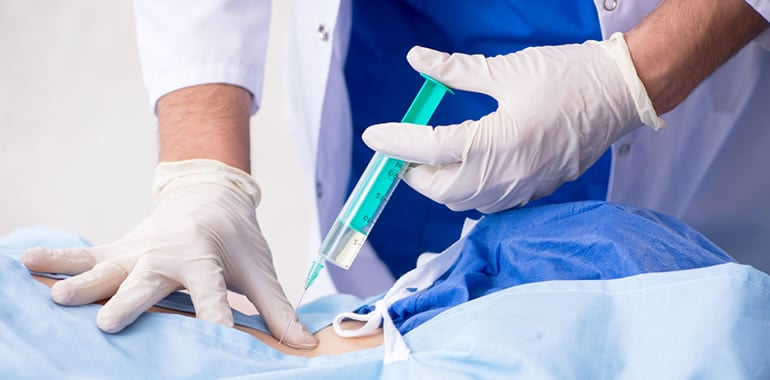A frequent cause of back pain is a herniated disc, a condition that occurs when the soft, gel-like center of a spinal disc pushes through a tear in its tougher exterior. This displacement can irritate nearby nerves, leading to pain, numbness, or weakness in an arm or leg. While many individuals find relief through traditional methods, some continue to experience persistent symptoms. Emerging biologic treatments offer a different approach. One such option is platelet-rich plasma (PRP) therapy, which utilizes the body’s own healing mechanisms to address musculoskeletal injuries.
What Are PRP Injections?
Platelet-rich plasma therapy is a form of regenerative medicine that uses a concentration of a patient’s own platelets to accelerate the healing of injured tendons, ligaments, muscles, and joints. Human blood is composed of several components, including red blood cells, white blood cells, plasma, and platelets. Platelets are best known for their role in blood clotting.
PRP is produced by taking a sample of the patient’s blood and placing it into a centrifuge. The process isolates the platelets and plasma, creating a concentrated solution of platelet-rich plasma. This resulting PRP contains a high concentration of growth factors. The theory behind PRP is that injecting this concentrated solution directly into an area of injury can stimulate and enhance the body’s natural healing process.
Can They Treat Herniated Discs?
The application of PRP for spinal conditions, including a herniated disc, is an area of growing medical research. When a disc herniates, the resulting inflammation and pressure on nerves cause pain. The goal of using PRP in this context is to promote a healing response within the damaged disc tissue.
By injecting platelet-rich plasma into or around the affected disc, the concentrated growth factors may help reduce inflammation and support tissue repair. Some studies suggest that these growth factors can encourage the regeneration of cells within the disc, potentially reducing the size of the herniation over time. This process could alleviate pressure on the spinal nerves and decrease the associated pain and neurological symptoms.
What Does the Process Involve?
The PRP injection procedure for a herniated disc is typically performed in an outpatient setting. It begins with a blood draw, similar to a standard blood test. The collected blood is then processed in a centrifuge to prepare the platelet-rich plasma.
Once the PRP is ready, the physician will numb the skin over the injection site with a local anesthetic to minimize discomfort. Using imaging guidance, such as ultrasound, the physician directs a thin needle to the precise location of the herniated disc. The imaging technology allows for accurate placement of the needle, targeting the specific area requiring treatment.
After confirming the needle is correctly positioned, the prepared PRP is slowly injected into or around the damaged disc. The entire injection process is usually completed in around 60 minutes. Physicians typically provide specific post-procedure instructions, which may include rest and a gradual return to normal activities.
Consult a Pain Management Specialist
A thorough evaluation by a qualified physician is necessary to determine if you are an appropriate candidate for this or any other spinal treatment. A pain management specialist can review your medical history and interpret diagnostic imaging to provide an accurate diagnosis. They can discuss the potential benefits and risks associated with PRP injections and help you receive the treatment you need.

